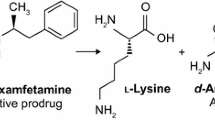Abstract
The effects of Ro 16-6028 and Ro 17-1812, two novel benzodiazepines with mixed agonist and antagonist properties, were studied in rats trained to discriminate either chlordiazepoxide or the benzodiazepine receptor ligand zolpidem. In rats discriminating 5 mg/kg chlordiazepoxide from saline both Ro 16-6028 and Ro 17-1812 produced responding on the drug lever. At a dose of 10 mg/kg both compounds gave rise to 100% responding on the lever associated with chlordiazepoxide. The dose-response curve produced by Ro 16-6028 was flatter than that for Ro 17-1812, however. The discriminative cue produced by 2 mg/kg zolpidem did not generalise to either Ro 16-6028 or Ro 17-1812. In contrast, both of those compounds antagonised the zolpidem cue and also antagonised the reduction in response rates produced by zolpidem. These results are consistent with previous findings that Ro 16-6028 and Ro 17-1812 may exert anxiolytic-like effects typical of benzodiazepines while antagonising the depressant actions of benzodiazepine receptor ligands. The results are also consistent with the suggestion that the discriminative cues produced by chlordiazepoxide and zolpidem may be mediated, at least partially, by activity at different sub-types of benzodiazepine receptors.
Similar content being viewed by others
References
Ator NA, Griffiths RR (1983) Lorazepam and pentobarbital drug discrimination in baboons: Cross-drug generalization and interaction with Ro 15–1788. J Pharmacol Exp Ther 226:776–782
Ator NA, Griffiths RR (1985) Lorazepam and pentobarbital discrimination: interactions with CGS 8216 and caffeine. Eur J Pharmacol 107:169–181
Ator NA, Griffiths RR (1986) Discriminative stimulus effects of atypical anxiolytics in baboons and rats. J Pharmacol Exp Ther 237:393–403
Bennett DA (1985) The non-sedating anxiolytic CGS 9896 produces discriminative stimuli that may be related to an anxioselective effect. Life Sci 37:703–709
Bennett DA, Petrack B (1984) CGS 9896: A nonbenzodiazepine, nonsedating potential anxiolytic. Drug Dev Res 4:75–82
Bernard PS, Bennett DA, Pastor G, Yokoyama N, Liebman JM (1985) CGS 9896: Agonist-antagonist benzodiazepine receptor activity revealed by anxiolytic, anticonvulsant and muscle relaxation assessment in rodents. J Pharmacol Exp Ther 235:98–105
Cooper SJ (1987) Benzodiazepine receptor ligands and intake of hypertonic NaCl solution in rehydrating rats. Pharmacol Biochem Behav (in press)
Colpaert FC, Desmedt LKC, Janssen PAJ (1976) Discriminative stimulus properties of benzodiazepines, barbiturates and pharmacologically related drugs: relation to some intrinsic and anticonvulsant effects. Eur J Pharmacol 37:113–123
Dantzer R, Perio A (1982) Behavioural evidence for partial agonistic properties of Ro 15–1788, a benzodiazepine receptor antagonist. Eur J Pharmacol 81:655–658
Depoortere H, Zivkovic B, Lloyd KG, Sanger DJ, Perrault G, Langer SZ, Bartholini G (1986) Zolpidem, a novel non-benzodiazepine hypnotic. I-Neuropharmacological and behavioral effects. J Pharmacol Exp Ther 237:649–658
De Vry J, Slangen JL (1986) Differential interactions between chlordiazepoxide, pentobarbital and benzodiazepine antagonists Ro 15–1788 and CGS 8216 in a drug discrimination procedure. Pharmacol Biochem Behav 24:999–1005
Garcha HS, Rose IC, Stolerman IP (1985) Midazolam cue in rats: Generalization tests with anxiolytic and other drugs. Psychopharmacology 87:233–237
Haefely W (1984) Pharmacological profile of two benzodiazepine partial agonists: Ro 16–6028 and Ro 17–1812. Clin Neuropharmacol 7, Suppl 1:670–671
Haug T, Gotestam KG (1982) The diazepam stimulus complex: specificity in a rat model. Eur J Pharmacol 80:225–230
Hendry JS, Balster RL, Rosecrans JA (1983) Discriminative stimulus properties of buspirone compared to central nervous system depressants in rats. Pharmacol Biochem Behav 19:97–101
Herling S, Shannon HE (1982) Ro 15–1788 antagonizes the discriminative stimulus effects of diazepam in rats but not similar effects of pentobarbital. Life Sci 31:2105–2112
Prado de Carvalho L, Venault P, Potier M-C, Dodd RH, Brown CL, Chapouthier G, Rossier J (1986) 3-(Methoxycarbonyl)-amino-β-carboline, a selective antagonist of the sedative effects of benzodiazepines. Eur J Pharmacol 129:323–332
Sanger DJ (1987) Discriminative stimulus properties of anxiolytic and sedative drugs: pharmacological specificity, In: Colpaert FC, Balster RL (eds) Transduction mechanisms of drug stimuli, Springer, Berlin Heidelberg New York Tokyo (in press)
Sanger DJ, Zivkovic B (1986) The discriminative stimulus properties of zolpidem, a novel imidazopyridine hypnotic. Psychopharmacology 89:317–322
Sanger DJ, Zivkovic B (1987) Discriminative stimulus properties of chlordiazepoxide and zolpidem. Agonist and antagonist effects of CGS 9896 and ZK 91296. Neuropharmacology 26:499–505
Sanger DJ, Joly D, Zivkovic B (1985) Behavioral effects of nonbenzodiazepine anxiolytic drugs: A comparison of CGS 9896 and zopiclone with chlordiazepoxide. J Pharmacol Exp Ther 232:831–837
Sanger DJ, Perrault G, Morel E, Joly D, Zivkovic B (1987) The behavioral profile of zolpidem, a novel hypnotic drug of imidazopyridine structure. Physiol Behav (in press)
Schechter MD (1984) Specific antagonism of the behavioral effects of chlordiazepoxide and pentobarbital in the rat. Prog Neuro-Psychopharmacol Biol Psychiatry 8:359–364
Shannon HE, Herling S (1983a) Discriminative stimulus effects of diazepam in rats: Evidence for a maximal effect. J Pharmacol Exp Ther 227:160–166
Shannon HE, Herling S (1983b) Antagonism of the discriminative effects of diazepam by pyrazoloquinolines in rats. Eur J Pharmacol 92:155–157
Spealman RD (1985) Discriminative stimulus effects of midazolam in squirrel monkeys: Comparison with other drugs and antagonism by Ro 15–1788. J Pharmacol Exp Ther 235:456–462
Stephens DN, Shearman GT, Kehr W (1984) Discriminative stimulus properties of β-carbolines characterized as agonists and inverse agonists at central benzodiazepine receptors. Psychopharmacology 83:233–239
Stolerman IP, Garcha HS, Rose IC (1986) Midazolam cue in rats: effects of Ro 15–1788 and picrotoxin. Psychopharmacology 89:183–188
Yokoyama N, Ritter B, Neubert A (1982) 2-Arylpyrazolo[4,3-c] quinolin-3-ones: Novel agonist, partial agonist and antagonist of benzodiazepines. J Med Chem 25:337–339
Author information
Authors and Affiliations
Rights and permissions
About this article
Cite this article
Sanger, D.J. Further investigation of the stimulus properties of chlordiazepoxide and zolpidem. Agonism and antagonism by two novel benzodiazepines. Psychopharmacology 93, 365–368 (1987). https://doi.org/10.1007/BF00187258
Received:
Revised:
Issue Date:
DOI: https://doi.org/10.1007/BF00187258




